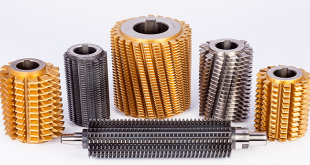Introduction
The feeling of having the perfect fitting sports shoe on your feet is every runner’s dream. From providing ample ventilation to cushioning and supporting the feet, the right fit in sports shoes does all the magic to improvise performance while you run.
From measuring your feet to wearing socks while you shop and picking the right shoe for your sport, choosing the best-fitting sports shoe does take effort but is worthwhile when you run in comfort, knowing your feet are safe and protected. With a few easy pointers, you can pick the right fit while you shop for sports shoes and conquer every mile in comfort and style.
1. The Fit
How the sports shoe fits on the feet determines the comfort while wearing them. Only when you are comfortable will you consistently wear your sports shoes and head out to the gym or for a run. This makes fit a prominent factor when choosing sports shoes. The best sports shoes must have the perfect balance between ventilation and snug fit for peak performance.
Choosing The Right Type
The right type of sports shoe is dependent on the sport you do. Choose sports shoes that are designed specifically for your sport. This ensures that all features have been designed to suit the complexities of the game while keeping your joints safe from injuries. A specifically designed sports shoe is a better investment than buying a single shoe for all your sports needs. Not only do they keep your feet safe, but having different sports shoes for each shoe increases the life of each shoe.
2. Lacing
The lacing of the sports shoe determines the quality of the workout. Too tight and your feet have no ventilation, and the constant rubbing against the shoe causes irritations. If the lacing is tied too loose, the power transmission from the feet to the shoe is not done perfectly, and you lose out on considerable performance gains while you work out. The perfect lacing for sports shoes are one where the fore-feet is snug and tight while the toe box feels spacious. The heel must cup the inner sole, and the stride must feel comfortable while you move.
3. Cushioning
Cushioning in the heel of the sports shoe is innovated to absorb the shock while you run such that it does not impact the joints. Various innovations, like crash pads, have been incorporated into sports shoe designs to improve the mobility of the athlete and prevent injuries. The best running shoe strikes the perfect balance between comfort, safety, cushioning and performance.
4. Heel drop
The drop from the heel to the toe, while you stand is essential in determining the cushioning provided in the sports shoe. A higher-drop sports shoe provides tremendous cushioning and is heavier. They are used predominantly for trail running and HIIT workouts at the gym. Road running uses sports shoes with minimal heel-to-toe drop for better lightweight performance.
5. Flex
Flexion in the shoe indicates how the shoe will perform on undulating surfaces. Flexion in sports shoes is suitable for activities that are dynamic. Static workouts require shoes with lesser flexion. This is achieved with the difference in the heel to the toe and with better insole and midsole thickness.
6. Surface
Pick your sports shoes according to the surface you will be practising on. Choose specific sports shoes that complement the style and type of game you play. Shoes designed for trail running might not be perfect for running the next marathon and vice-versa. The aim is to be aware of the surface that you will be running or working out on and pick sports shoes specifically for that surface to work out on.
When it comes to picking the perfect sports shoes for your feet, always try out the shoe and take a few steps in them to understand the shoe. Shop only during the evenings as the feet tend to swell during the daytime. Wear socks that you would be running with to understand the feel of the shoe before you make the purchase.
Frequently Asked Questions
1. How to choose the best-fitting sports shoes?
Look out for ample space in the toe box. The shoe must not squeeze against the feet. The forefoot must feel snug and tight, while the heel must feel cushioned as you take your stride.
2. Should you take sports shoes one size bigger?
Sports shoes have to fit the feet perfectly while having extra space in the toe box for better ventilation and performance. If anything, getting sports shoes that are half a size larger than everyday sneakers is advised.
3. How much space should be left between the longest toe and the shoe?
As a rule, we should have about half an inch gap between the tip of the longest toe of the feet to the edge of the shoe for the best fit.
 Isaiminia World Breaking News & Top Stories
Isaiminia World Breaking News & Top Stories




